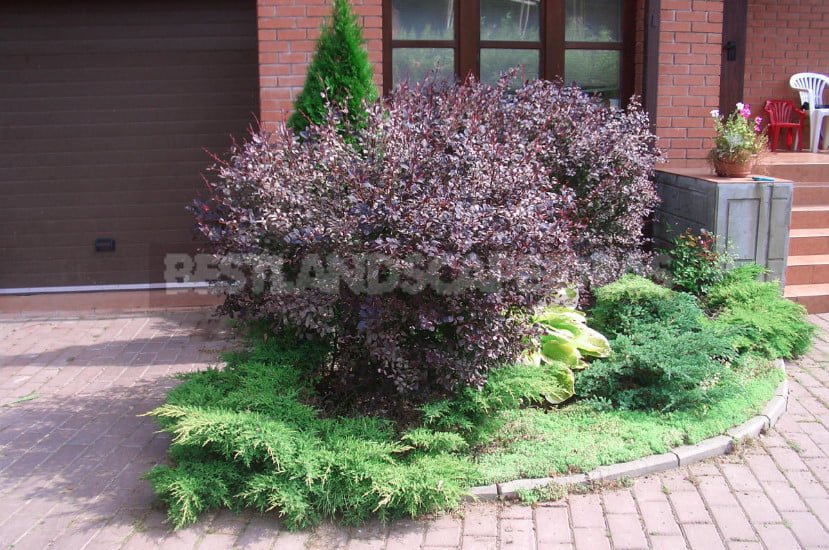
The color of the leaves of varietal barberry is incredibly diverse — and not only green. It is yellow, purple, mottled (for example, green with bright white spots in varieties ‘Kelleris’ or purple with white, pink and gray spots in varieties ‘Harlequin’), with a border (purple with a thin Golden border in varieties ‘Golden Ring’).
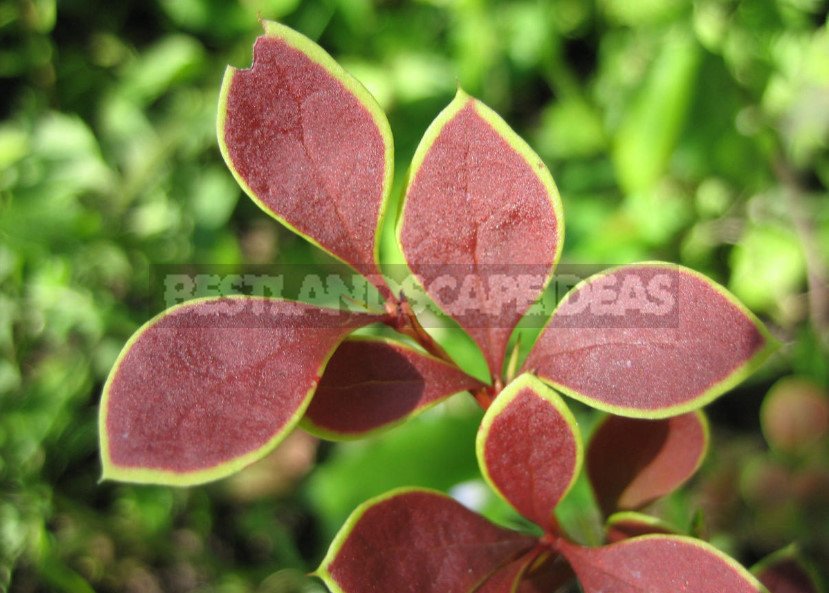
Bright colours
Yellow leaf barberry quite a bit. Everyone knows Berberis thunbergii ‘Aurea’ – cold yellow, about a meter high. It burns in the sun, it needs a penumbra location. Sun is not afraid of a relatively new yellow variety ‘Bonanza Gold’, but it is lower in height – about 0.5 meters.
Charming autumn colouring barberies’, especially greenish: its leaves turn orange-Magenta and purplish barberies’ red in autumn and is also good, yellowish fall is almost unchanged. After leaf fall the bushes for a long time — until the spring is decorated with scarlet berries. Birds do not eat them, although they are not poisonous.
All barberries bloom in the spring bunches of yellow flowers, it is stunningly impressive against the purple foliage, not bad-on the background of green leaves, almost imperceptibly in yellow forms. And abundantly bloom and bear fruit barberry not only in the sun, but also in partial shade.
Variety of sizes and shapes
Among barberry trees there are giants and dwarfs, to pick up a Bush of any height — from 30 centimeters to three meters — will not be difficult.
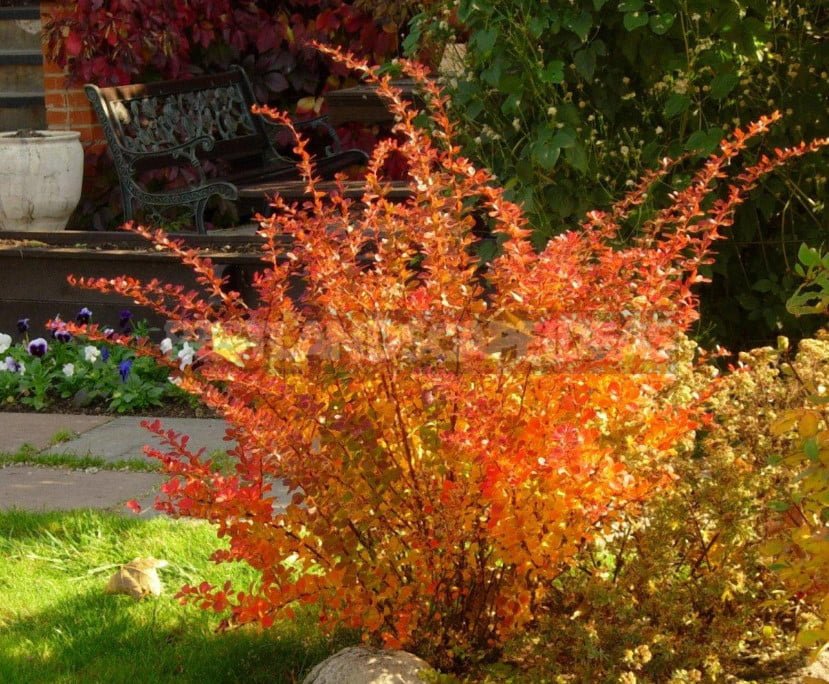
In the garden, we pay attention not only to the color of the leaves and the height of the Bush, its shape is very important. Often this is the main thing in the design of landings. Dwarf barberry usually have a compact dense hemispherical shape of the crown. High barberry often-hanging shrubs with drooping branches, although there are among them a very interesting group with erect, vertically arranged shoots, for example, greenish ‘Erecta’ and purple ‘Red Pilar’.
You can come up with for barberry shape and size, achieving this haircut. They cut perfectly, they make excellent figures — for example, spherical. Do not be afraid to cut, this is a very interesting activity, and you can form a barberry almost at any time of the year.
Shaping to taste
In the competition for the best shrub for the barbed hedge barberry probably would have won first place. The fence of barberry can be designed free, untrimmed (then it will be flowering and fruiting) or molded. This very fence can be not only green, but also purple, yellow or a combination of them, which is very impressive. In General, if you turn on the imagination and know well the range of plants, you can come up with an unusually interesting hedges of barberry — for example, different height, curly-cut or combining cropped and free-growing fragments.
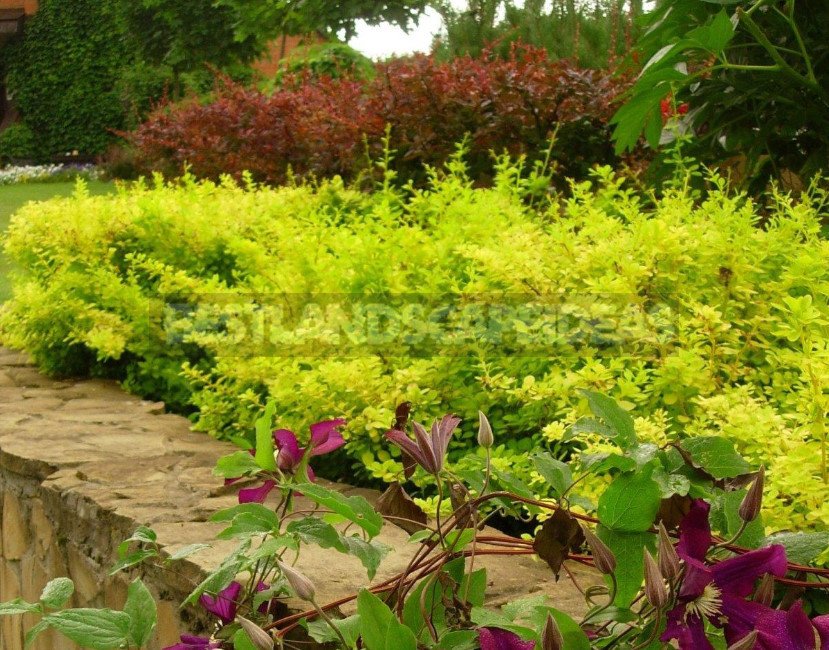
Often gardeners refuse hedges in their garden because they can not immediately spend a lot of money to purchase a sufficient number of plants. This problem is not difficult to solve. Barberry easily propagated by green cuttings, and if a little work in June, you can get a couple of years a large amount of uniform fine planting material. They reproduce well and seeds, but the varieties in this case is not necessary to say: if, for example, you sow seeds of purple-leaved barberry, in the offspring will be leaves of different shades of purple and green.
Amazing simplicity
Simplicity barberies’ amazing. They are absolutely not demanding on soils, are not afraid of strong winds, perfectly tolerate drought. All of them are light-loving, but grow well in partial shade, although there are several features. So, in order to get a rich color of purple leaves, grow them in full sun — those bushes that grow in partial shade, in the purple color of the leaves is clearly present green.
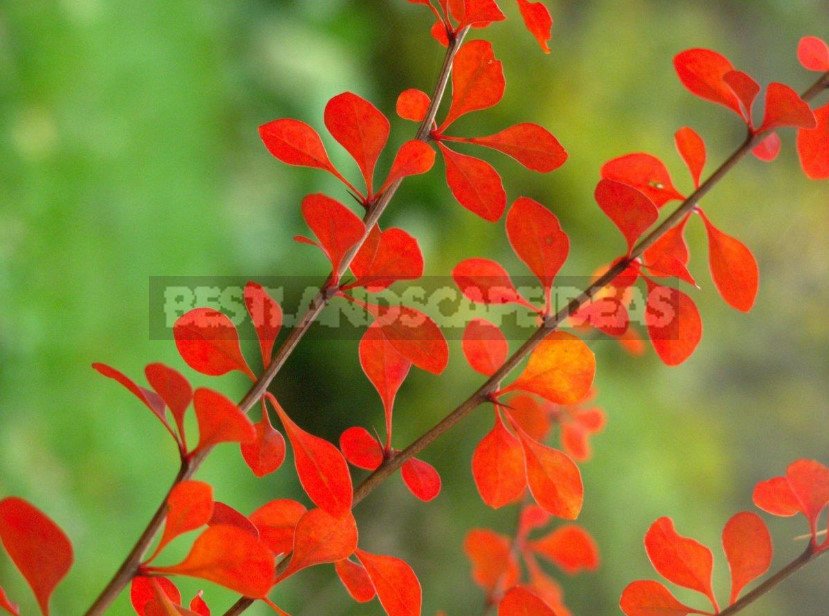
We made sure that your garden can not do without barberry, but doubt that it is really easy to grow and does not require special care?
Barberry from the point of view of botany
The name comes from the Arabic word “вerberi”, meaning “with petals having the shape of a shell”. This genus includes up to 175 species that grow mainly in Central Asia, China, the Himalayas, as well as in South America. Among the barberry trees there are both deciduous and evergreen shrubs with sharp simple, trifoliate or five prickles. They sit at the base of the kidneys, carrying bundles of leaves.
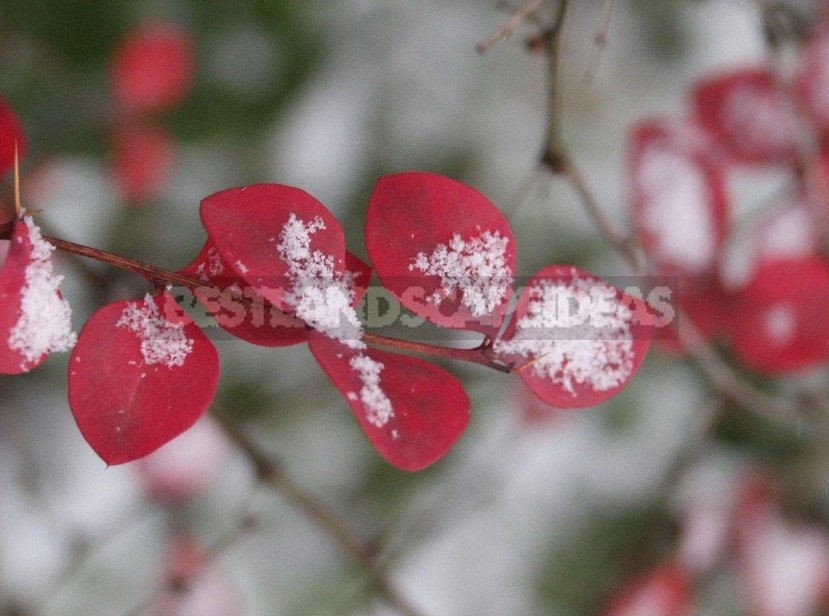
In the first half of June, barberry bushes adorn numerous inflorescences of yellow fragrant flowers, which are bright lanterns hanging from the shoots. But most of all, beautiful plants in autumn in the bright attire of the fruit and leaves. Berries they are not very large — usually 7-10 mm, sometimes up to 1.5 cm in length. They are decorative due to the bright color, abundance on the Bush and shape, which can be ellipsoidal, rounded, pear-shaped. In most species, the fruit is edible and contains vitamins C and A, malic, citric and tartaric acids. They are widely used as a seasoning for meat, as well as for the preparation of jam and syrups.
Planting and caring for barberry
Shrub withstands a large range of soil acidity: from acidic to neutral, but still prefers neutral (pH 6-7). Soil mixture: garden soil, humus, sand in equal quantities. When planting in acidic soil, it is desirable to make 300-400 g of slaked lime or 200 g of wood ash on a Bush. Particularly well responds to liming Berberis vulgaris.
Barberry drought-resistant and does not tolerate stagnant moisture. Better develop in the light, but can grow in partial shade. Most of the species is very decorative and is used in single or group plantings, hedges, and undersized species – on rocky hills, as curbs among perennial flowers. They are well tolerated by urban conditions, amenable to molding. With a single landing, the distance between the bushes is not less than 1.5 – 2 m. When you create dense single-row hedges of barberry to one meter are planted in 4 copies, two-row – 5 and free growing – 2.
Reproduction of barberry
Species barberry well propagated by cuttings, layering and seeds, which are sown in the autumn. Varieties are best propagated by cuttings. When playing by seed decorative forms give a large splitting, therefore, the selection of seedlings with the most pronounced varietal characteristics is required. In spring sowing seeds need stratification from 3 to 5 months at a temperature of +2…+5ºC. In the spring they are sown in open ground ridges with loose soil, 100-120 pieces per running meter in grooves 1-1. 5 cm deep. After the appearance of two real leaves, the seedlings are thinned, leaving at least 3 cm between them.

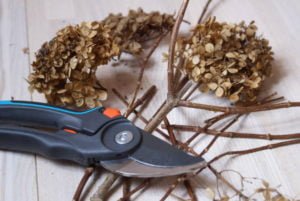

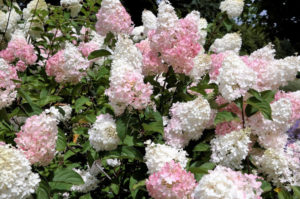
Leave a Reply